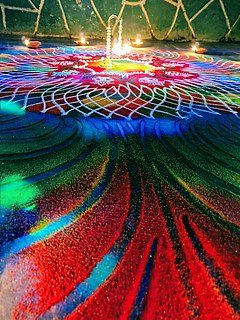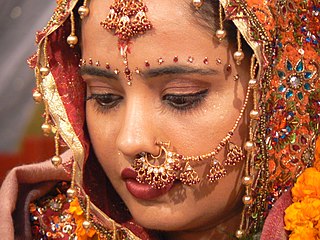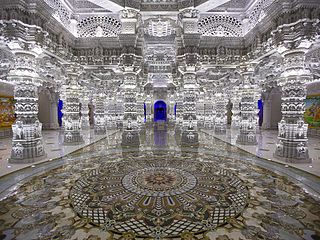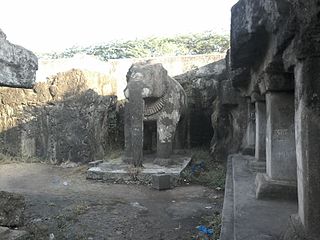
A wedding is a ceremony where two people are united in marriage. Wedding traditions and customs vary greatly between cultures, ethnic groups, religions, countries, and social classes. Most wedding ceremonies involve an exchange of marriage vows by a couple, presentation of a gift, and a public proclamation of marriage by an authority figure or celebrant. Special wedding garments are often worn, and the ceremony is sometimes followed by a wedding reception. Music, poetry, prayers, or readings from religious texts or literature are also commonly incorporated into the ceremony, as well as superstitious customs originating in Ancient Rome.

A wedding dress or bridal gown is the dress worn by the bride during a wedding ceremony. The color, style and ceremonial importance of the gown can depend on the religion and culture of the wedding participants. In Western cultures, the wedding dress is most commonly white, which fashion was made popular by Queen Victoria when she married in 1840. In eastern cultures, brides often choose red to symbolize auspiciousness.

Mehndi is a form of body art and temporary skin decoration common in the Indian Subcontinent, in which decorative designs are created on a person's body, using a paste, created from the powdered dry leaves of the henna plant. It is a popular form of body art among the women of India, Bangladesh, Pakistan, Nepal, and the Maldives, and resembles similar practices found in North Africa and the Middle East.

Rangoli is an art form originating in the Indian subcontinent, in which patterns are created on the floor or a tabletop using materials such as powdered lime stone, dry rice flour, coloured sand, quartz powder, flower petals, and coloured rocks. It is an everyday practice in hindu households, however the colours are preferred during festivals and other important celebrations as it is time consuming. It is usually made during Diwali or Tihar, Onam, Pongal, Sankranthi and other Hindu festivals in the Indian subcontinent. It is made mostly during diwali. Designs are passed from one generation to the next, keeping both the art form and the tradition alive.

A bindi is a coloured dot worn on the centre of the forehead, originally by Hindus and Jains from the Indian subcontinent. The word bindu dates back to the hymn of creation known as Nasadiya Sukta in the Rigveda Mandala 10. Bindu is considered the point at which creation begins and may become unity. It is also described as "the sacred symbol of the cosmos in its unmanifested state".

A Hindu wedding, known as Vivaha (विवाह) in Sanskrit, or Lagna (लग्न) or Kalyanam (कल्याणम्) is the traditional wedding ceremony for Hindus. The wedding ceremonies are very colourful, and celebrations may extend for several days. The bride's and groom's home—entrance, doors, wall, floor, roof—are sometimes decorated with colors, balloons, and other decorations.

Wedding photography is a specialty in photography that is primarily focused on the photography of events and activities relating to weddings. It may include other types of portrait photography of the couple before the official wedding day, such as a pre-wedding engagement session. On the official wedding day, the photographer(s) will attempt to provide portrait photography, as well as '''documentary photography''' coverage to document the different wedding events and rituals throughout the wedding day(s).

Phulkari refers to the folk embroidery of the Punjab. Although Phulkari means floral work, the designs include not only flowers but also cover motifs and geometrical shapes.The main characteristics of Phulkari embroidery are use of darn stitch on the wrong side of coarse cotton cloth with coloured silken thread. Punjabi women create innumerable alluring and interesting designs and patterns by their skilful manipulation of the darn stitch. According to Kehal (2009), a cloth where only a few flowers are embroidered is called a Phulkari. The other types are distinct varieties. The traditional varieties of Phulkaris are large items of cloth and include Chope, Tilpatr, Neelak and Bagh. Sometimes, the Bagh is given separate categorization of its own as on other varieties of a Phulkari, parts of the cloth is visible, whereas in a Bagh, the embroidery covers the entire garment so that the base cloth is not visible. Further, in contemporary modern designs, simple and sparsely embroidered dupattas, odhinis, and shawls, made for everyday use, are referred to as Phulkaris, whereas clothing items that cover the entire body, made for special and ceremonial occasions such as weddings are called Baghs. The Phulkari continues to be an integral part of Punjabi weddings to the present day.

The traditional Vietnamese wedding is one of the most important ceremonies in Vietnamese culture, which is influenced by Confucian and Buddhist ideologies.

Weddings in India vary according to the region, the religion, the community and the personal preferences of the bride and groom. They are festive occasions in India, and in most cases celebrated with extensive decorations, colour, music, dance, costumes and rituals that depend on the community, region and religion of the bride and the groom, as well as their preferences. India celebrates about 10 million weddings per year, of which about 80% are Hindu weddings.

A Bengali Muslim wedding includes many rituals and ceremonies that can span several days. In most cases, it starts with the Paka Dekha ceremony and ends with the Bou Bhat ceremony.

Mandapa in Indian architecture, especially Hindu temple architecture, is a pillared hall or pavilion for public rituals.

Bengali Hindu wedding refers to Bengali wedding with Hindu rites and rituals native to the Indian subcontinent.
Afghan weddings are unique and modern celebrations of the people of Afghanistan. It is a tradition in which, like King Amanullah Khan and Queen Soraya Tarzi, the bride and groom whom are respected as King and Queen of the night. This was also the custom in the wedding of Aminullah's cousin to whom he placed down his sword, and kneeled to the ground and told the bride and groom that their wedding night was truly respected, they can make any command as a king and Queen for the night. for the wedding they wear green dresses
Hindu Wedding cards or invitations hallmark Hindu marriage rituals and customs which are entangled with eternal bonding, affection and blessing. The lavish traditions are highlighted with opulently colored Hindu wedding invitations aesthetically designed in handmade paper and designs enriched with heart-felt emotions. Hindu invitations symbolize glitter, lively mood and fun of the matrimonial ceremony. These cards are not only to inform and invite rather they express style and theme of the special day.
Weddings in the United States follow traditions often based on religion, culture, and social norms. Most wedding traditions in the United States were assimilated from other, generally European, countries. Marriages in the U.S. are typically arranged by the participants and ceremonies may either be religious or civil. There is a tradition that the prospective bridegroom ask his future father-in-law for his blessing.
An Odia Hindu wedding, or bahaghara, is a wedding ceremony performed by Odia Hindu people in the Indian state of Odisha. There are subtle differences in the rites observed by different castes. In Odia marriage rituals the mother of the bridegroom does not take part in the ceremony. The Utkala Brahmins have their weddings only in the daytime, preferably at midday or in the morning, while the other caste weddings are done during the evening or night. There is the custom of sending betel nuts to family friends for inviting them to the marriage. The first invitation is sent to the family deity as a respect to the lord. Marriages in Odisha are mostly fixed and arranged by the parents. Marriages for serving or capturing is not common. In the Odia community widow remarriage is allowed in some lower caste, in this case the younger brother is allowed to marry the deceased brother's wife. The marriage happens in three major rituals, Nirbandha, Bahaghara (wedding) and Chauthi (Chaturthi) (consummation). A marriage is not considered complete or valid until consummation. These rituals are performed either at the Duara or Tola kanias house.

The Swaminarayan Akshardham in Robbinsville, New Jersey, is a Hindu mandir (temple). The mandir, one component of the campus, was inaugurated and opened to the public on August 10, 2014. Plans for the complex include the Swaminarayan Akshardham Mahamandir and a visitor's center, which will house an exhibition on Indian history and culture.

The Shivleni Caves in Ambajogai, Maharashtra, India are rock-cut cave monuments which date in King Udayaditya from Paramara dynasty of Malwa. Total excavations were hewn out of rock cut and carved deep inside the hill. The caves include sculptures of Hindu deities like Shiva, Saptamatrukas and Ganesha.
Puja thali or Puja plate is a tray or large container on which the entire puja materials are accumulated and decorated. In Hindu religious occasions, festivals, traditions and rituals, puja thali maintains an auspicious role. Puja thali may be made of steel, gold, silver, brass or any other metal; it may be rounded, oval or any other shaped or with little engravings and other decorations.















